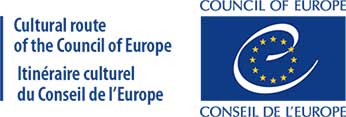On 1 October, 2020, the Interreg project HansaLink started its activities. The project aims at conceptualizing thematic routes based on Hanseatic trade links dating back to medieval times, thus improving the visibility of historic links. These routes will allow citizens and visitors alike to experience a culture shaped by trade, individual encounters, and a common economic policy.
The Hansa, Cultural Route of the Council of Europe, is made of towns and communities sharing a common history – the medieval Hanseatic League. For more than 400 years the League was an important economic and political player in Europe. In fact, it can even be seen as a forerunner of the EU in the voluntary cooperation of towns that shaped pre-modern society profoundly and created a lasting community of cities. Yet, today many of the historic links between Hanseatic cities are no longer visible, especially at the transnational level. This is where the project HansaLink comes in: building on the existing cooperation between Hanseatic cities and sound historic research, it will design authentic routes linked to Hanseatic trade goods and themes. Along the routes, citizens and visitors will be able to travel back in time and explore the common Hanseatic past as a keystone in the history of Northern Europe and a source of regional identity.
The project is carried out by the Association HanseVerein e.V. in cooperation with the Research Center for Hanse and Baltic History (FGHO), the Gotland Museum and the Municipality of Veliky Novgorod. It is a pilot project that runs until September 2021 and is co-financed by the Interreg Baltic Sea Region Programme. Based on the concepts developed in this project it is envisaged to implement several thematic routes that can be travelled online and offline.




